10 Important Tips For Visiting Holocaust Museums, Memorials & Historical Sites
Holocaust museums, memorials, and historical sites may not be your idea of a jolly holiday, but there are times in our lives when a vacation is much more important than that. This is what it means to travel with purpose.
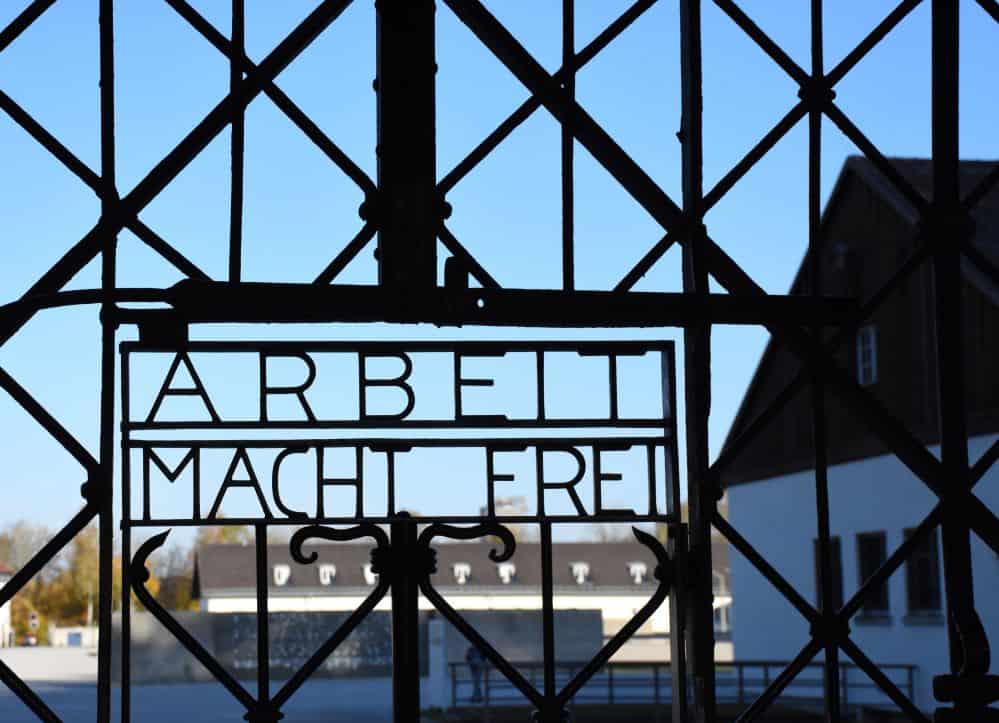
How much do you really know about the Holocaust? Do you understand the complexities of how so many people were convinced to participate in or allow something so horrendous to happen? Do you know how to identify the subtle changes that occurred and would you recognize if they were happening today?
Why Learn About the Holocaust?
A recent eye-opening survey of Americans between the ages of 18 and 39 (Millenials and Gen Z) revealed that 23 percent of those surveyed believed the Holocaust was a myth or had been exaggerated. Nearly half of all respondents said they have seen Holocaust denial or distortion posts online. And worst of all: 1 in 8 (12 %) said they had definitely not heard or didn’t think they had heard about the Holocaust. This seems to indicate that we can’t take a back seat and rely totally on our education systems to teach our children about these important events in our history.
The Holocaust of World War II was not merely another series of wartime events. These atrocities revealed the deep depravity of what humans are capable of doing to gain and retain power. The discrimination, anti-Semitism, torture, murder, and genocide in this time period are unrivaled in history. Over six million Jewish people, 2 to 3 million ethnic Polish, and many others were systematically murdered by the German Nazi regime. The atrocities took place over a wide swath of Europe. Not just in one or two remote, isolated areas.
“Today, white supremacists and neo-Nazis are resurgent, organizing and recruiting across borders, intensifying their efforts to deny, distort and rewrite history, including the Holocaust”
United Nations Secretary-General – António Guterres – 2021
While topics like this aren’t always comfortable to talk about, we do a disservice to our children and the world at large when we avoid teaching them about the dangers and realities of the flaws of humanity at an appropriate age.
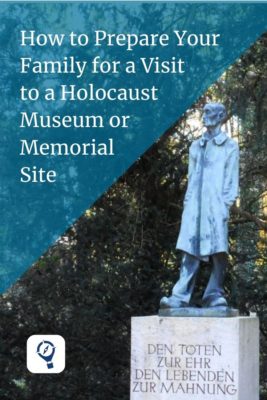
Which Holocaust Site Should I Visit?
I’ve had the honor of visiting the U.S. Holocaust Museum in Washington DC, Dachau Concentration Camp Memorial, near Munich, Germany, and the Anne Frank House in Amsterdam, Netherlands. All of these sites are very different from each other. They all opened my eyes even more to the realities of an unimaginable chapter of history that seemed mostly abstract when I learned about it in school.
Seeing and touching real places, hearing true stories, breathing the air where victims and survivors struggled all helped me understand so much more than a textbook could ever teach.
What Kind of Holocaust Sites Can I Visit?
There are generally four types of Holocaust sites around the world. Each serves an important purpose in educating, commemorating, and reminding us of the horrific tragedies of World War II. They also remind us that human atrocities and genocide continues to happen in other regions of the world even today. The lists below are far from complete, but hopefully, they’ll give you some ideas of places to consider for learning more about the Holocaust.
Cities like Berlin, Germany or Krakow, Poland may immediately come to mind for Holocaust Museums. The lists below will give you more Holocaust sites. But, if you’re planning a trip, especially to Europe, why not take a moment to do a quick search for “Holocaust at…” (your destination) to see if there are lesser-known sites to visit nearby.
Due to the ever-changing impacts of Covid-19, hours and services may change. Please contact the site to confirm hours, offerings, and health and safety protocols for your visit.
Holocaust Memorials & Monuments – around the world
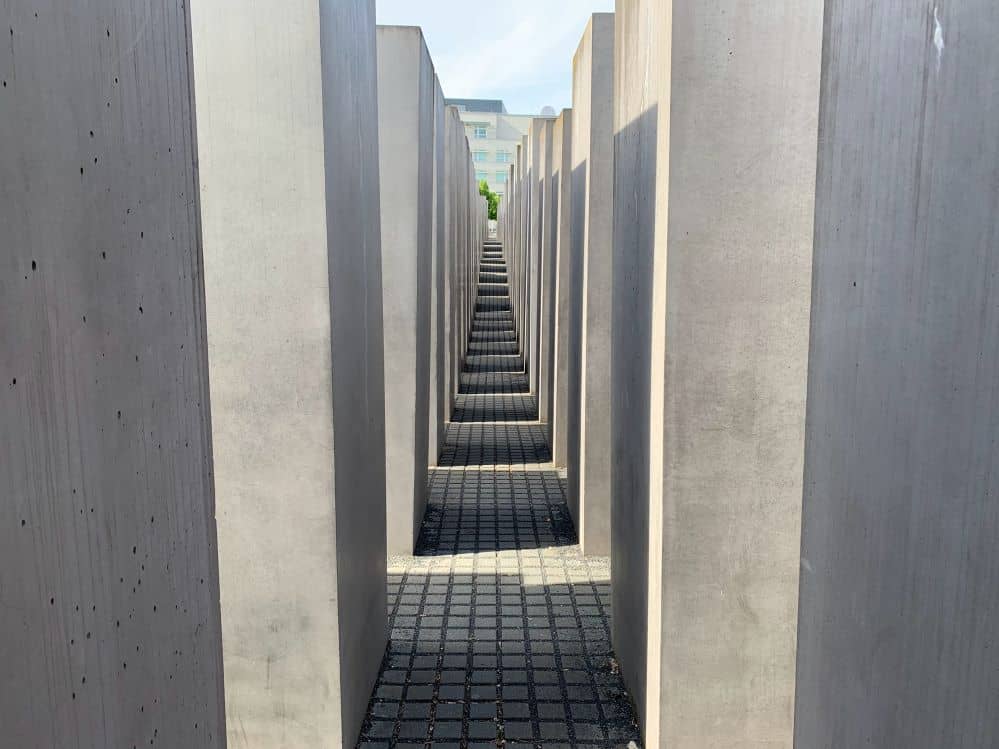
Memorials are often statues, structures, or sculptures that serve as a visual reminder of lives that were lost or changed forever. They may not have much additional information about the period, but help us remember the tragic events. These are just a few of the Holocaust memorials found in surprising places around the world.
Anne Frank Human Rights Memorial – Boise, Idaho (USA)
Holocaust Memorial and Information Centre (Memorial to the Murdered Jews) – Berlin, Germany (Europe)
Holocaust Memorial of Athens – Athens, Greece (Europe)
Suriname Holocaust Memorial – Neveh Shalom Synagogue, Paramaribo, Suriname (South America)
Memorial Portal of European Sites of Holocaust Remembrance – listings of other sites in Europe
Holocaust Museums – around the world
These thought-provoking museums contain photos, videos, stories, accounts, artifacts, oral history interviews, and exhibits that teach and document the realities of the Holocaust, genocide, or a specific part of the era. Resistance museums focus on how various regions fought against Hitler and the Nazis.
There are Holocaust museums and memorials on every continent except Antarctica. Here are just a few of the many Holocaust museums to consider – listed by continent and country:
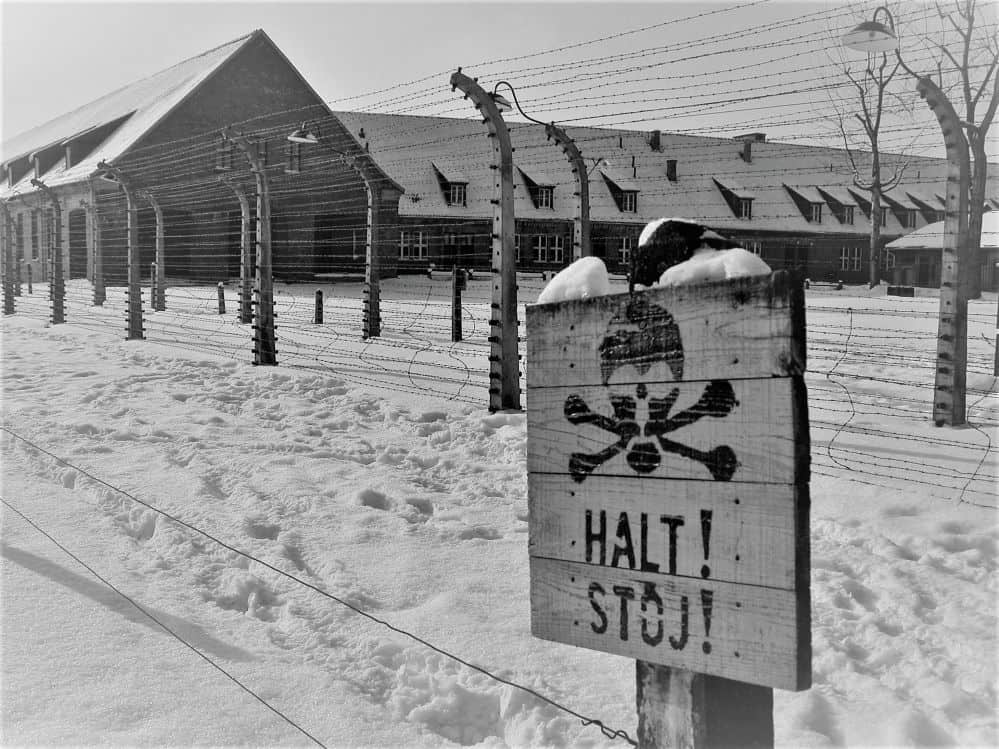
Africa
Cape Town Holocaust & Genocide Centre – Cape Town, South Africa
Durban Holocaust & Genocide Centre – Durban, South Africa
Johannesburg Holocaust & Genocide Centre (JHGC) – Johannesburg, South Africa
Sadly, while there is documentation that Labor and Internment Camps existed in Northern Africa during WWII, I couldn’t find any information about Holocaust museums, memorials, or historical sites that could be visited there. I saw an article from 2019 about a Holocaust Memorial being built in Marakesh, Morocco, then a later news story saying it was demolished. If you know of any Holocaust-related destinations in Africa, please let me know in the comments.
Asia
Shanghai Jewish Refugees Museum – Hongkou District, Shanghai, China (Tragically ironic considering what is currently happening with Chinese Muslim-minority Uighurs)
Hong Kong Holocaust and Tolerance Centre (HKHTC) – Shau Kei Wan, Hong Kong
Yad Vashem World Holocaust Remembrance Center and Museum of Holocaust Art – Jerusalem, Israel, Middle East
Taiwan Holocaust Museum (Che Lu Chien Church) – Tainan City, Taiwan
Australia – Oceania
Jewish Holocaust Center – Elsternwick, Victoria, Australia
Sydney Jewish Museum – Sydney, New South Wales, Australia
Holocaust Centre of New Zealand – Wellington, New Zealand
Europe
Museum of Danish Resistance – Copenhagen, Denmark
Dutch Resistance Museum – Amsterdam, Netherlands
Norway Resistance Museum – Oslo, Norway
Warsaw Rising Museum – Warsaw, Poland
Babyn Yar Holocaust Memorial Center (planned museum and online resources) – Kyiv, Ukraine
Holocaust Exhibition and Learning Centre – Huddersfield, United Kingdom
The Wiener Holocaust Library – London, England, UK – The oldest Holocaust archive in the world
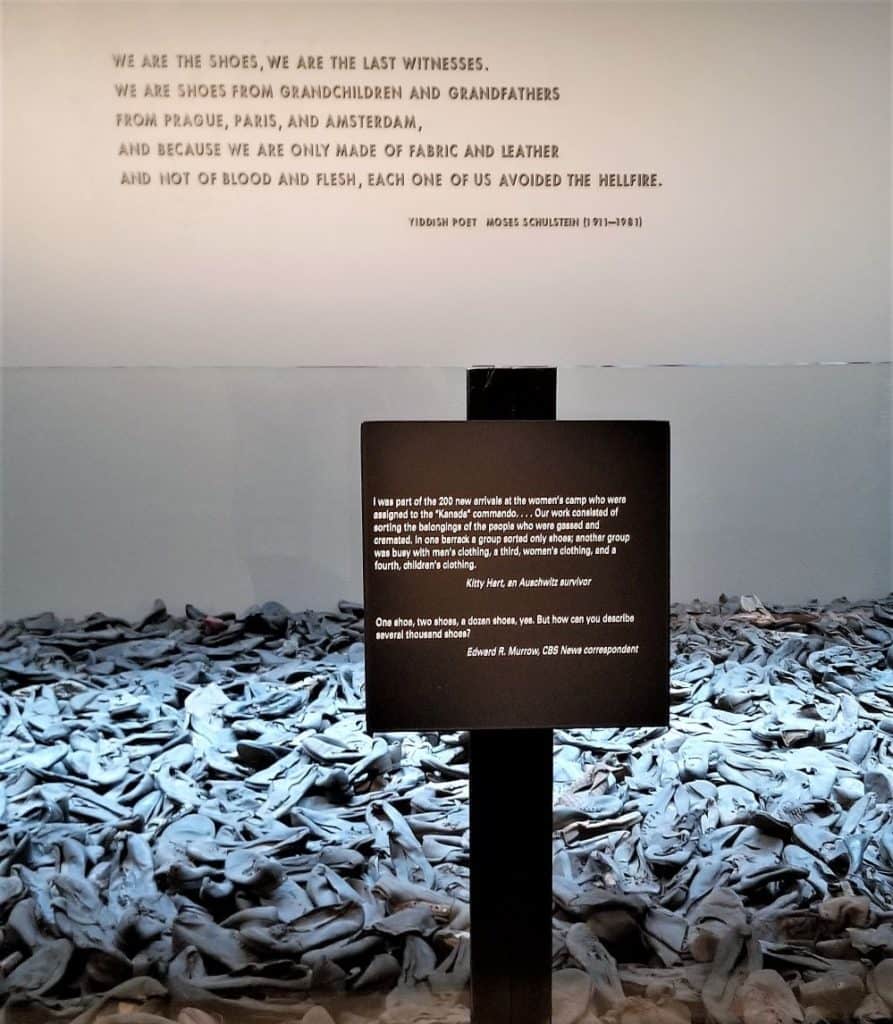
North America
Montreal Holocaust Museum – Montreal, Canada
Tuvie Maizel Jewish Historical and Holocaust Museum – Mexico City, Mexico
Holocaust Museum LA – Los Angeles, California, USA
Museum of Tolerance – A Simon Wiesenthal Center Museum – Los Angeles, California, USA
United States Holocaust Memorial Museum – Washington DC, USA
United States List of Holocaust memorials and museums in specifics states – there are currently sites in 30 states plus the nation’s capital.
South America
Holocaust Museum of Buenos Aires – Buenos Aires, Argentina, South America
I also found very little about Holocaust museums in South America. Let me know if you’re aware of others.
More Locations
Worldwide List of Holocaust Memorials and Museums
Holocaust Survival and Rescuer Sites
You can also find heroic accounts of ordinary citizens that went to extraordinary lengths to assist, protect and hide Jews and others who were oppressed and in danger during the Holocaust. Here are a few examples:
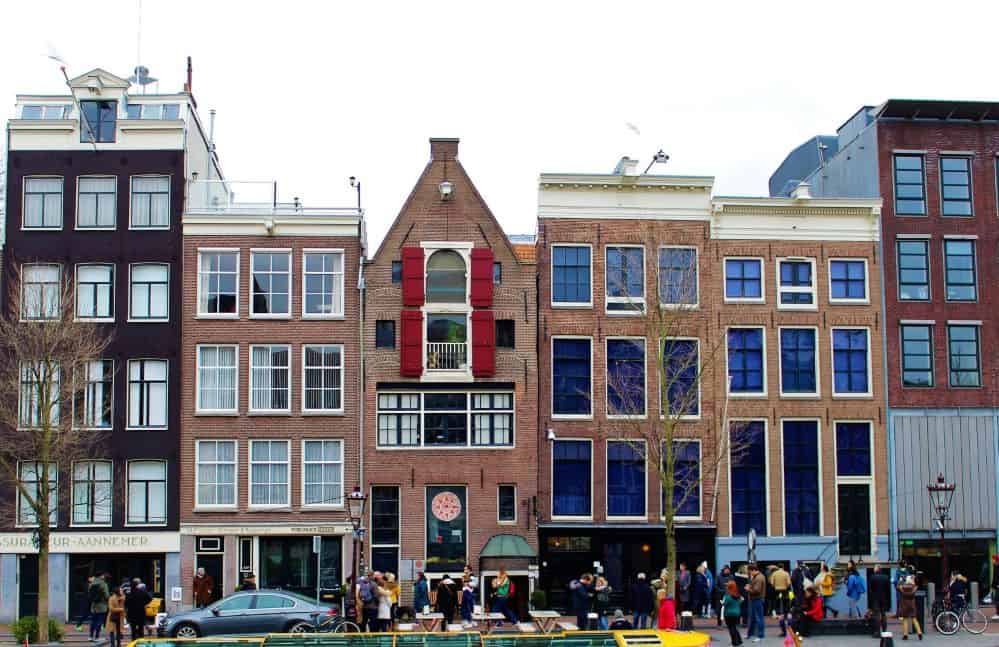
Anne Frank House – Amsterdam, Netherlands – Visit the home where Anne Frank (a Jewish girl) hid for more than 2 years with several others during World War II. This is where she wrote her famous diary. My post about Holocaust Books shares more about her diary.
Corrie Ten Boom House – Haarlem, Netherlands – the actual location of the book, “The Hiding Place” which tells the riveting story of how a middle-aged Dutch watchmaker became a heroine of the Resistance, and a survivor of Hitler’s death camps. My post about Holocaust Books shares more about her books.
Oskar Schindler Factory – Krakow, Poland – the real-life setting of the true story and award-winning movie by Steven Spielberg – “Schindler’s List”. My post about Holocaust Books and movies shares more.
Holocaust Historical Sites: Concentration Camps, Extermination Camps, Ghettos
Click to enlarge the map below to see the European locations of Extermination camps, Concentration camps, cities with oppressive ghettos, major massacres, and major deportation routes.
The list that follows is a sampling of links to some of these historical sites.
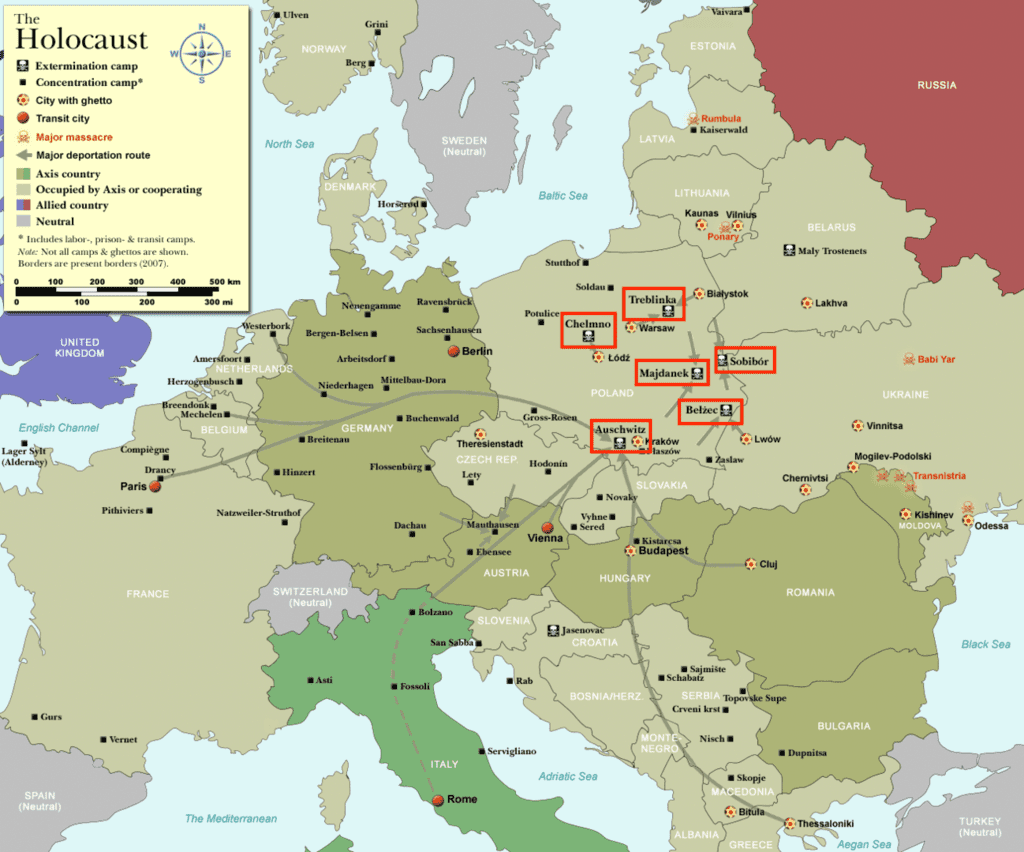
Auschwitz_Birkenau Memorial and Museum – Holocaust Extermination site – a UNESCO World Heritage Site near Krakow, Poland
Dachau Concentration Camp Memorial Site – near Munich, Germany
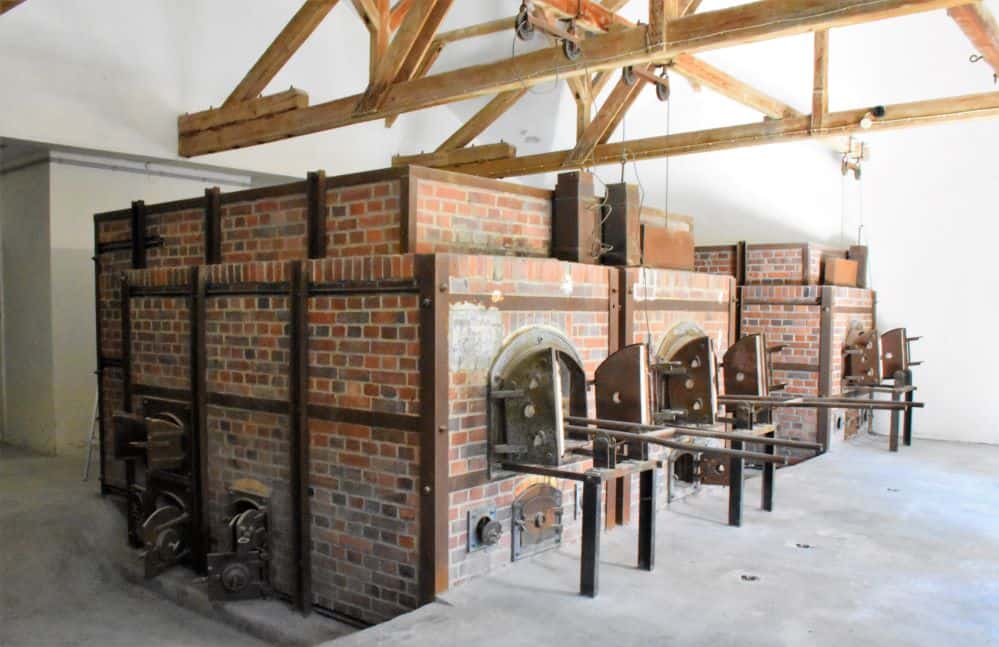
Flossenbürg Concentration Camp Memorial – Flossenburg, Germany
Mauthausen Memorial (Labor Camp & Stairway of Death) – Mauthausen, Austria
Nazi Party Rally Grounds and Documentation Center – Nuremburg, Germany
Oradour, L’Auze Martyr Village and Memory Center (Ruins of an entire village massacred and destroyed by Nazis) – Oradour-sur-Glane (near Limoges), France
Terezin Memorial (Theresienstadt Concentration Camp – Památník Terezín – Malá pevnost (60 KM from Prague) Czech Republic
Warsaw Ghetto and Uprising Monument – Warsaw, Poland
More European Holocaust Historical Sites Open to the Public – This list from the Jewish Virtual Library contains links to Holocaust-related locations in Austria, Czech Republic, France, Germany, and the Netherlands.
What is the Earliest Age That’s Appropriate to Visit a Holocaust Site?
While the truth about the Holocaust is vital to be passed along to the next generation, the subject matter and visuals can be graphic and troubling for a young mind to process. Care should be taken not to expose a child that’s too young to truly understand and assimilate the information. Experts suggest early adolescence is an appropriate time for parents to offer details about the Holocaust and discuss hate, discrimination, and prejudice.
You know your child best and it’s important to weigh their sensitivity and maturity with the importance of learning about this tragic era of our world history.
To help you decide, each museum and historical site offers minimum age recommendations for visitors. Be sure to check their website before planning your visit.
Holocaust Site Age Recommendations
Here are some examples from a variety of sites:
Anne Frank’s House in Amsterdam, Netherlands has educational programs geared toward students age 11 and older. The content in this home and museum are less graphic than at some other Holocaust sites.
Auschwitz_Birkenau Memorial and Museum near Krakow, Poland is a former Nazi Extermination Camp and recommends that only those 14 and older visit.
Dachau Concentration Camp Memorial Site near Munich, Germany recommends that children under the age of 12 do not visit the museum exhibitions, memorial site grounds, or the former crematorium as some of the display material could disturb them. Dachau guided tours are available only to people, age 13 and older.
Holocaust Museum Los Angeles offers certain galleries for visitors ages 10 and older, while others are recommended for 12 and up.
US Holocaust Museum (USHMM) in Washington DC suggests that children age 11 and older generally have the maturity to learn about the Holocaust. At this age, they can empathize with the individual stories and put those stories in the greater context of history.
For kids age 9-10 and above: The USHMM offers a special exhibit geared specifically for these younger children. It’s called “Remember the Children: Daniel’s Story”. The exhibition was created with the help of a team of experts and has been reviewed by child psychiatrists, educators, and museum interpreters. The museum doesn’t recommend that children younger than 11 years old visit other permanent exhibits in their museum.
If you have any questions or concerns about a child of a certain age, talk with the Holocaust site to get their recommendation.
What Conversations Should I Have With My Kids Before Visiting a Holocaust Site?
The Dachau Memorial Site suggests having a conversation with your kids about their expectations and fears before visiting a Holocaust site.
The USHMM offers lesson plans and other teaching materials that can be downloaded by anyone to review and discuss as a group or family before your visit.
What Other Sources Can Help Us Learn about the Holocaust Before Going?
There’s a wealth of resources online to help prepare you and your adolescents for a visit to a Holocaust museum or historical site. Your child’s school or public Librarian can also help you find all the age-appropriate media and books they have on the topic.
I’m also in the process of creating a separate post with lists of the best books, movies, and documentaries to check into too. Sign up for my weekly newsletter to find out when that’s available.

Should I Schedule a Guided Tour?
Any easy way to check for local guided walking or driving tours specific to Holocaust historical areas is to go to a resource like “Get Your Guide“. Just enter the city and try using keywords like “Holocaust”, “World War 2” or “Jewish History” and see what’s available.
Holocaust museums or historical sites may also offer their own guided tours that help to provide insights and answer questions that come up while you’re visiting. These can be immensely valuable, especially if your kids have a lot of questions and you don’t have a deep knowledge of Holocaust history.
A few examples:
Anne Frank House offers a free audio tour in 9 languages. These local tours are also available.
Dachau offers guided tours for individuals and groups. Individual tickets (max 15 people) can be bought at the Visitors’ Center the day of your visit. Group tours must be scheduled in advance.
Check each site’s visitor information before your trip to see what’s available. In some cases, you’ll want to plan and reserve your tour well in advance of your visit.
What Should We Do Before Our Visit to a Holocaust Museum or Site?
The previous evening or morning the day you plan to visit review the rules of the Holocaust site.
Remind everyone that this is a sacred space that honors those who died, and it should be treated with respect.
Ask if there are any questions, fears, or expectations that need to be discussed before visiting.
Your kids may say that they don’t want to go and you may feel some apprehension yourself. It’s perfectly natural to be hesitant to learn about something that you know will be difficult. But sometimes it’s important to travel with purpose. To set aside time for learning and experiences that will help you and your family gain perspective and maturity about the world and its people.
Plan to wear clothes that show respect for those whose lives were taken. Do not wear clothes or symbols of disrespect to the human dignity of others.
Discuss whether photos or videos are allowed at the Holocaust museum or historical site.
Discuss what members of the group can do if they need to take a break during the visit.
Plan a time and location to meet if you get separated. If there’s a Museum Shop or Gift Shop that may be a good place to meet and look for more resources to take home.
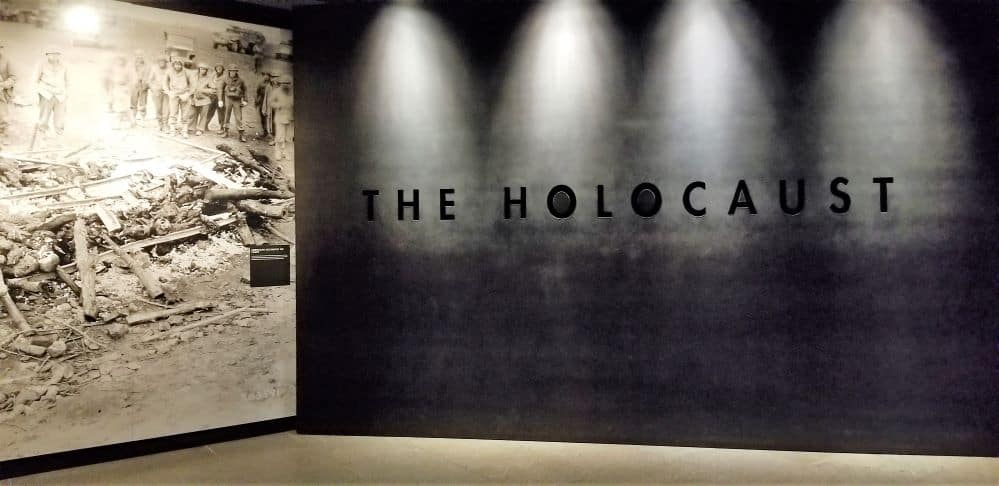
What Should We Do After Our Visit to a Holocaust Site?
Avoid planning any other activities after your visit to a Holocaust-related site. Allow each person some quiet time to reflect and process what they’ve seen.
Consider sitting together somewhere quiet as a family or group to allow for discussion and questions that may have come to mind. If you don’t know the answers, research online, email, or call the Holocaust site that you visited to get the answers.
You can also spend time researching answers online with your child to show them how to find reputable and factual websites.
This may also be a good time to look for books, movies, or documentaries that can help answer any questions or deepen your understanding of the visit.
Dachau Concentration Camp Memorial Site also offers this suggestion:
“After visiting the Memorial Site, it is important that you do not leave your group alone with their impressions. One possibility of reviewing a visit is to simply talk about what has remained in the memory. As part of our half and full-day seminars, the Education Department has developed the exercise: “What’s Remained?”
Although carried out on the Memorial Site, the exercise is also suitable for schools, families, etc. outside the grounds. Photos of Dachau Memorial Site are one way to get a discussion going: sitting in a circle with the photos laid out in the middle, each participant chooses the image that interests or moves them, and they use the photo to speak about what they’ve learned from their visit.”
[Downloadable images of Dachau that can be used for this exercise.]
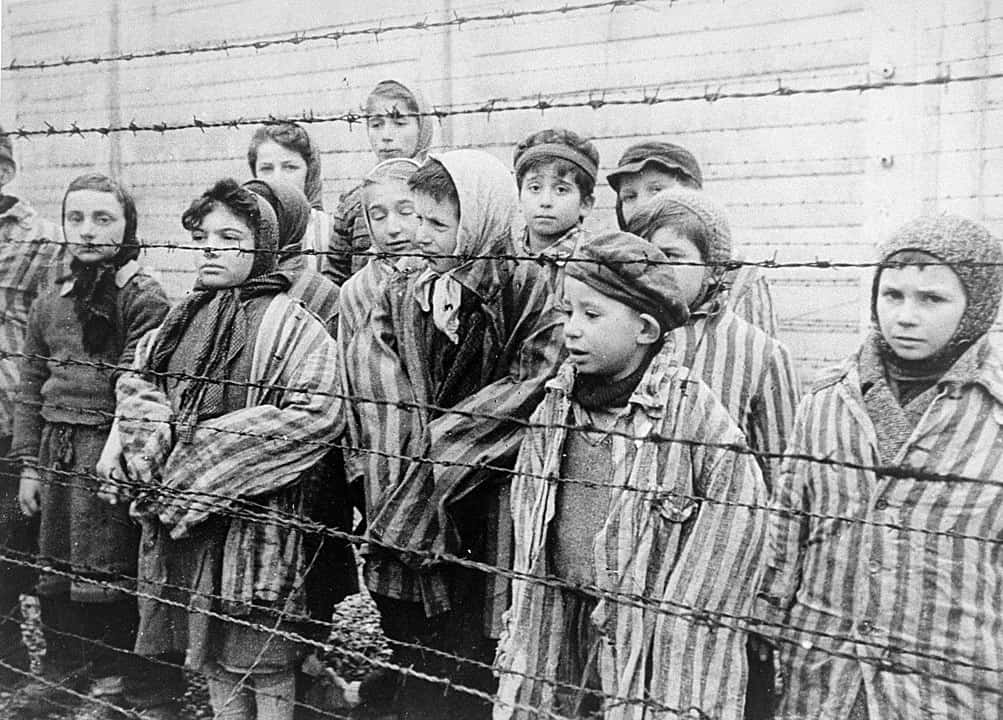
How Can We Learn About the Holocaust if We Can’t Visit?
Most of the Holocaust museums and sites mentioned have some virtual information available in the form of virtual tours, videos, online conversations or lectures, images, books, and other excellent age-appropriate learning materials.
In addition to their other virtual resources, the Jewish Holocaust Center in Australia offers a chance for you or your child to send a letter to a Holocaust survivor.
Some, Holocaust museums, like Yad Vashem offer free online courses.
“Facing History and Ourselves” offers excellent Holocaust resources broken down by topics for discussion. Geared to teachers and students, but adaptable to individuals and families.
The U.S. National Archives stores millions of documents relating to current events and world history. This page, honoring Holocaust Remembrance Day shares a sampling of the information they have available. A general search of the term “Holocaust” will bring up much more.
Where Do We Go From Here?
Congratulate yourself and your kids on making the effort to learn about a significant chapter in the history of humanity and the world.
Keep the conversation going.
Talk to your child to see if they’d like to share what they learned with their class at school. Most teachers welcome first-hand accounts of historical sites that other students might not have the chance to visit. The teacher may even offer extra credit for a presentation. If your child brought home a book or resources about the Holocaust offer to let other students borrow them.
It’s very possible that your child’s fellow students or friends will have questions about the Holocaust museum or site visit. Make sure your kids know that you’re available to help find the answers to any questions that come up.
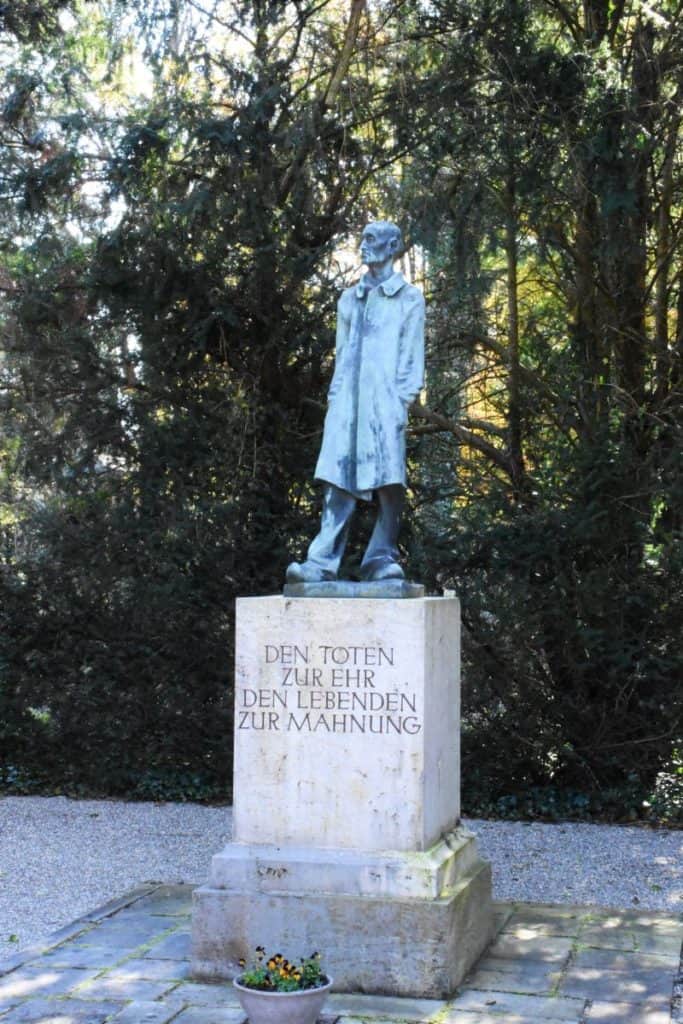
How Can I Apply What I Learned?
Remember that there are extremists that spread lies that the Holocaust didn’t happen. As more first-hand witnesses and survivors pass away, the more memories fade. The passage of time makes it even more important to educate our young people about the Holocaust’s severity and significance.
Understand that human atrocities and genocide are still happening today. Learn more about countries currently involved and those that are at risk through the information provided by the Early Warning Project.
The Early Warning Project is managed by the US Holocaust Memorial Museum with the goal of shining a light, sparking discussion, and taking preventative action where a high risk of genocide and mass atrocities are discovered or predicted.
Encourage your teens to be aware of this and have discussions about what you can do as citizens of the world to combat these kinds of actions.
Tools For Family Discussions
“Facing History and Ourselves” has an excellent website that uses current and historical events to challenge people to stand up against hate and bigotry. While it’s geared toward teachers and students, their resources can often be used in a family setting as well.
This excellent article in Parents magazine about teaching kids about the Holocaust says, “Having these hard conversations about our global history can play a big role in raising moral and compassionate children. Parents should also emphasize the importance of speaking up against injustice. “We need to help them to understand the role of the bystander and what it means to speak out and use your voice. And we ultimately need them to learn about the power of hope.”
Which Holocaust museum or site do you plan to visit with your family? Do you have other questions that I can help with? After your trip, I’d love to hear any other suggestions about how to prepare and how the visit went too.
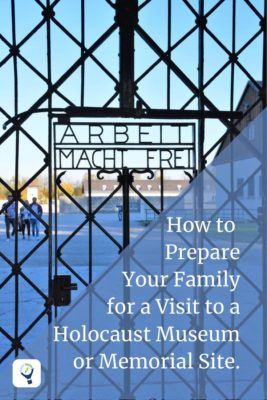
Related Posts
Considering a visit to the Holocaust Museum in Washington DC? Here are more reasons to go.
Learn about those who fought the Nazis in World War II
Traveling with Purpose is a reader-supported blog. In order to keep the lights on, I sometimes include links to products or services that I recommend. I may get commissions for any purchases that you make through those links, but it won’t cost you any more for the products. As an Amazon Associate, I also earn from qualifying purchases.
Category: Czech Republic, Europe, France, Germany, Mid-Atlantic States, Netherlands, Norway, Poland, United Kingdom, United States, Washington DC
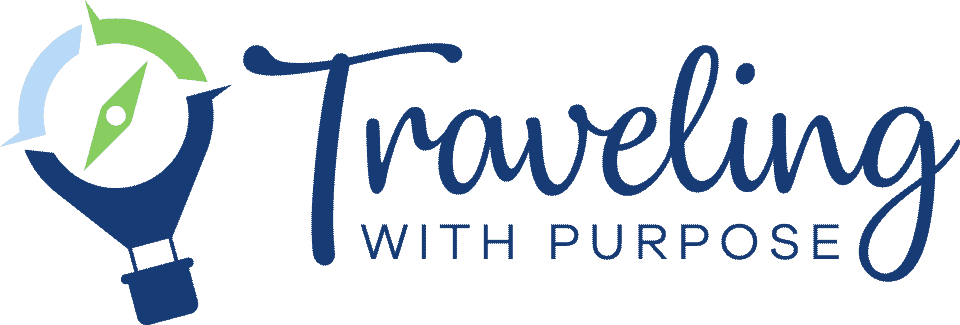






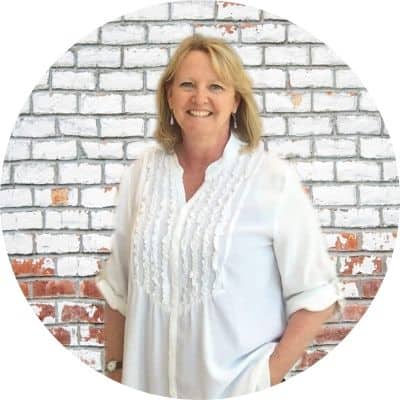

Yes I have visited many of the sites you have mentioned globally. It would be great if you would also do a post on genocide museums and sites of slavery in the US. Isabel Wilkerson’s book Caste is a start. Nazi Germany based it’s progrom on US slavery which they believed was too brutal to enact fully.
In Cambodia it is museums of the missing. In Vietnam it is prisons, in Myanmar you cannot see much but Suem Reap was cleared of families several times. I agree with what you wrote. But US history of slavery is 250 years longer than the Holocaust.
Thanks
Cody Brady
Hi Cody, Thanks so much for stopping by and for your comment. I appreciate your interest in the history and reality of genocide and slavery. I’m a travel blogger in general, but I have an interest in history as well. I’m actually working on some posts for February relating to Black History Month. Since I live in Virginia right now, I’m focusing on that at the moment. Feel free to sign up for my weekly email and you’ll be notified of any new posts that come out. Thanks again for your suggestions.
I have visited a few sites, Canada, Germany, Netherlands and Czech Republic – and will always seek out when travelling. It’s an important learning we all need to do, as well as, conversation having. Great resource that I know I will use for future trips.
Thanks for stopping by. I was surprised at some of the locations around the world that have Holocaust sites. It’s good to know that there’s something on nearly every continent.
A very useful, interesting and informative post. We visited Dachau in 2019 and found it extremely sad. Having learnt some of the history at school we were aware of what happened but nothing can prepare you for the true horror of what people had to endure. It is sad to think that some of the younger generation think the Holocaust was exaggerated or even a myth. Thanks for this post lest we forget.
You’re so welcome, Alma. You’re right. It’s so hard to imagine that those atrocities really happened, but they did and sadly are happening in other parts of the world even now.
Thank you so much for sharing this important post. My husband’s grandfather was a concentration camp survivor and his mother and grandmother were forced from their home and went into hiding to avoid deportation. It’s alarming how many people are not more aware of this tragic time. History is a responsibility.
Oh wow. Those personal stories are so important to tell. As the survivors get older, it’s even more important.
This is such a thoughtful post and these tips are invaluable. I’ve visited a couple of Holocaust memorials and the Holocaust museum in Washington D.C. the museum was such an interesting experience because they let fairly large timed groups in at once. I was traveling solo but got bundled into a group with high school kids on a school trip. The started off, as teenagers do, fairly rowdy and noisy. But as we worked our way through the museum, they gradually grew more quiet and respectful as the true horror of what had happened hit them. I think it is so important to educate future generations about what happened to ensure we never find history repeating itself. Thank you for sharing this guide.
I totally agree, Hannah. I’m sure this is not something a teenager would normally choose to do, but it’s so important for them to know about these things so they can make sure they don’t happen when they’re adults.
Thanks for this resource Nancy, especially the part about talking to children about the Holocaust. I’ve visited the Anne Frank House, but haven’t been to any other Holocaust-specific museums or memorials. Now that I know about the US Holocaust Museum in Washington DC, I’m putting it on my list of must-visit museums.
Oh Katherine, It’s an amazing place. Sobering and heart-wrenching, but definitely should be near the top of the list especially if you have teens or pre-teens.
Thank you for this informative post. It’s such an important part of history. Something we can’t forget, so it won’t happen again…
I think the Holocaust needs to be talked about much more. Its very important that we know and remember what happened. Unfortunately there are some who say it never happened. So very sad. We were to have visited the memorial in Krakow last year. Of course that didnt happen. I have seen awful “instagramers photos” where they stand smile at these memorials. I just dont get it. Anyway thank you for this very important post.
You’re so welcome Bree. I agree. It’s astounding that anyone would say this horrific chapter of history didn’t happen. What if those people experienced the same thing. So tragic.
This is a very important topic for travelers. When I visited Auschwitz I was overwhelmed and easily could have made some mistakes. Wish I would have read this first!
Thank you Jamie, I think it’s hard to fully prepare for a visit like that, but having a little knowledge in advance does help. The important thing was that you made the time to go there. Thanks for stopping by.
This is such an important topic that you covered here. Our 9 year old is becoming more interested in history and specifically World War II so we have started having these conversations. It’s so hard emotionally (for me) but so important.
Daphna, As I mentioned in this post, I’m putting together a list of age-appropriate books about the Holocaust that I’ll be posting soon. In the meantime, here are some recommendations from the US Holocaust Museum. Some are appropriate for 9-year-olds. https://www.ushmm.org/collections/bibliography/childrens-books
Thank you for sharing this. I have been to the Memorial to the Murdered Jews of Europe in Berlin and it is definitely such a special and important memorial. Sharing all of the memorials and monuments around the world is so helpful and I’ll definitely be referencing this post for my future trip planning. Thank you!
You are so welcome, Kat. I was surprised to see so many, but thankful for the concerted effort to remember. I haven’t been to the memorial in Berlin, but it looks like an amazing place.
Very thought-provoking post. Those statistics at the start are shocking & frightening. Visiting sites like these are harrowing but so important to continually underline the atrocities which happened in the past & strengthen the resolve to never let it happen again in the future. It’s great advice about “what to do afterwards” as a debrief is essential. What you see & read stays with you for a long time. Going to the Killing Fields in Cambodia was so important to understand what happened in the country & gave me new eyes to see how much impact the past has on the modern-day country. Seeing Angkor Wat & the temples is one thing, but you need to understand the shade of a destination as well as the light. If you ever find yourself in Skopje in Macedonia, they have a fantastic Holocaust Museum too.
I totally agree, Sue. We can’t truly appreciate the culture of a country unless we know the full picture. We also visited Bosnia several years ago and learned about similar genocide and atrocities there. The world can be an ugly place sometimes, but the more we know, the more we can resist those ideas.
I visited two concentration camps in Poland and it was a very emotional experience. One thing that annoyed me was the groups of tourists taking selfies and smiling photos inside of the gas chambers. People need to educate themselves before visiting sites like this!
I agree, Krista. We were fortunate that everyone was respectful when we were there.
I was so SHOCKED to read 23% of millennials and Gen Z think the Holocaust is a myth or exaggerated! I found this post to be so informative! I really liked that you had a section for Holocaust museums around the world to show where to find them!
Hi Destiny, I was shocked about that stat too. One thing I noticed in the criteria was that they had to know that there were 6 million Jews killed and I’m not sure how picky they were about that specific number. I mean, I could have told you that there were millions of Jewish people killed, but I’m not sure I would have known precisely 6 million. So, let’s hope that some of that 23% just didn’t know the exact number they were looking for. In any case, it shows that we need to be more diligent in teaching about the Holocaust. Thanks for stopping by.
It is shocking to read that so many of today’s young generation doesn’t know about the Holocaust, deny it, or don’t think it was such a big deal. Shocking! It is only by learning from history that we can try to prevent a recurrence of such an atrocity. Sadly I feel our society is again headed down that path. Prior to the days of the ‘Trump cult’ I, too, had difficulty understanding how things could go so wrong and get so out of hand in the 1930s. Now I understand. Very informative post!
Hi Ildi, I agree. We’ve seen troubling trends in the last few years in the U.S. and around the globe that could take us down similar paths as in WWII. I still don’t understand how one human being or group can decide that another race or group merits persecution and death, but we’re seeing it again with groups like the Rohingya in Myanmar and the Xinjiang Uyghurs in China. “Genocide Watch” lists 18 different groups in danger of atrocities and genocide today! Horrific and terrifying.
I have visited Auschwitz and Birkenau and I was shocked to see people not respecting the sites and taking selfies, posing and smiling in front of places where so many people died in horrible ways. The guide had to point at the beginning of the tour to be respectful, and even so, some people didn’t listen. I think that educations and schools should include the Holocaust in their history books. When I was in school no history teacher mentioned the Holocaust.
I’m with you on the tragedy of disrespecting these sites, Joanna. We did learn about the Holocaust when I was in school long ago in the U.S. I’m surprised that the UK wouldn’t teach about it since it was so close to home. Here in the U.S. every state decides on a curriculum, so I’m sure the teaching is uneven around the country. I think that’s why I feel it’s so important for parents to take responsibility in case the school drops the ball.
Thank for sharing this informative post about visiting holocaust museums and memorial sites. I am shocked when I read that so many of today’s young generation don’t know about holocaust and also I don’t know too much about it. After reading your article now I understand. Thanks again for sharing this knowledge.
You’re quite welcome. There so much to learn about it. Thanks for stopping by.